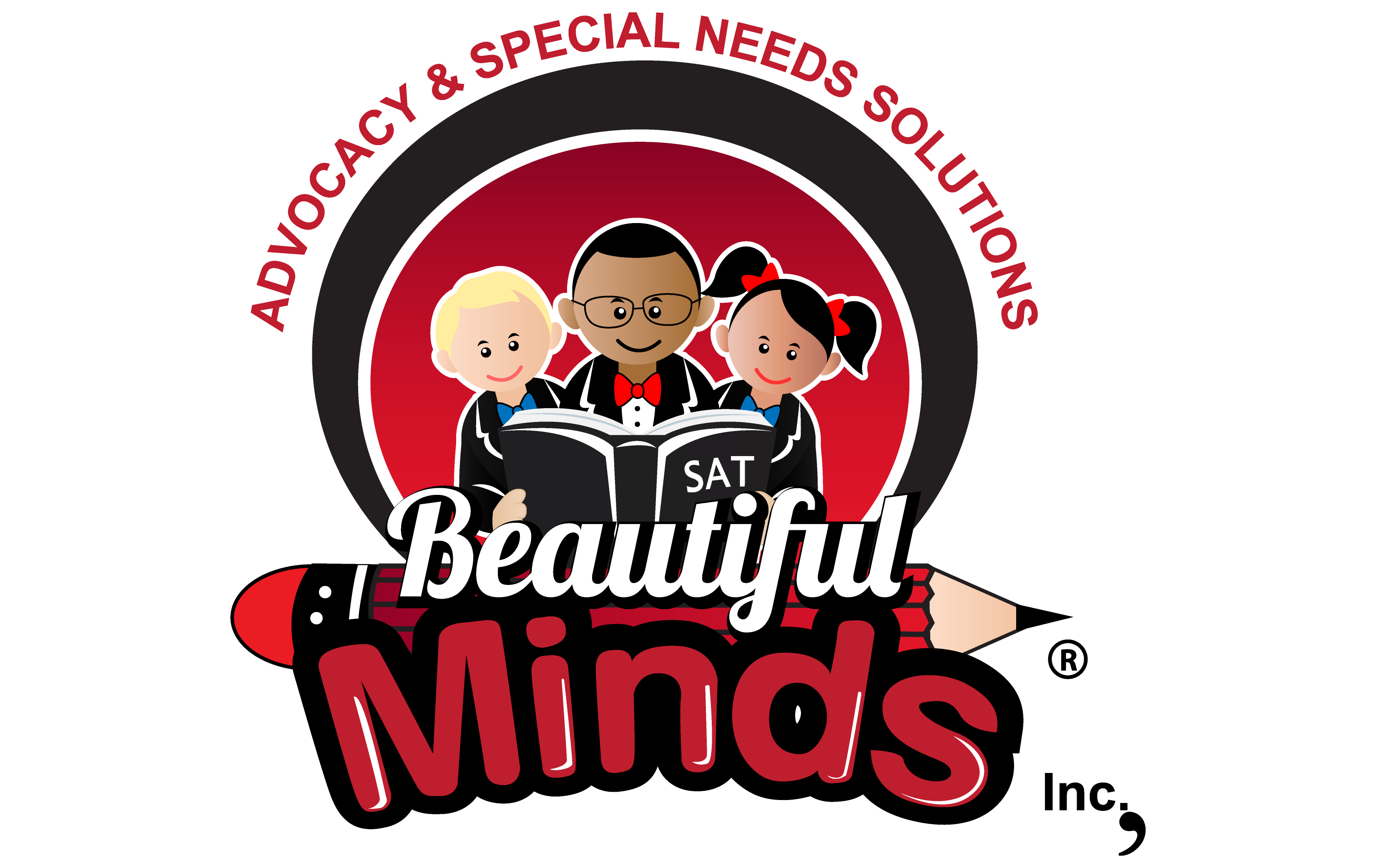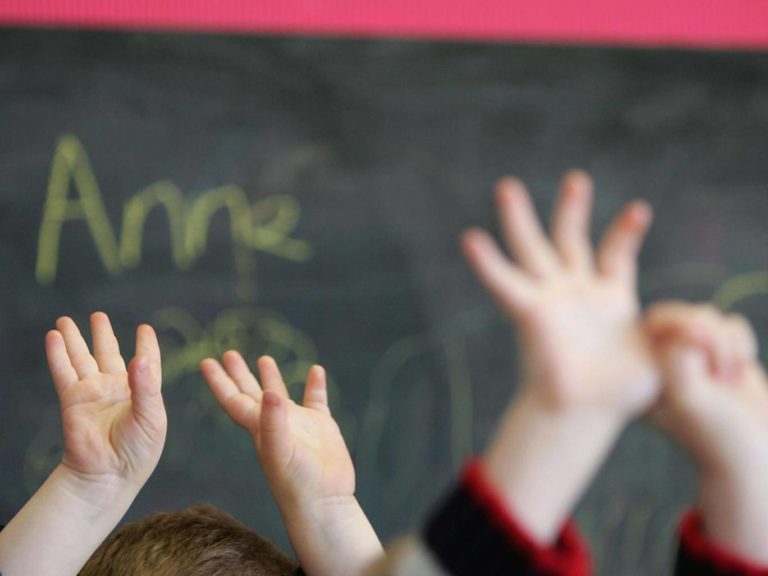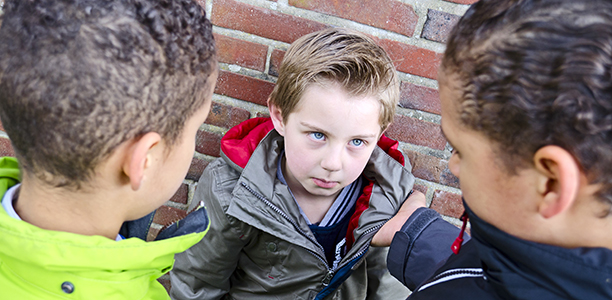Seven Things to Know About the “1 in 5” with Learning and Attention Issues
By: Dr. Ifeanyi A. Ufondu
The term “learning and attention issues” covers a wide range of challenges kids may face in school, at home and in the community. It includes all children who are struggling — whether their issues have been formally identified or not. Learning and attention issues are brain-based difficulties, and they often run in families. Find resources that can help kids be successful in school and in life!
#1: One in five kids has a learning or attention issue. Chances are, you know a child with learning and attention issues.
Learning Disabilities: An Overview
Find out more about the different types of learning disabilities, how they’re identified, and what types of instruction support students with LD.
Reading Rocks
Meet Sam, Madeleine, Oliver, and the rest of the kids at the Lab School of Washington, D.C., a school designed especially for children with learning disabilities.
Down and Up: The Emotional Journey of a Child with LD
This animation from the National Center for Learning Disabilities shows what it’s like for a child who is struggling in school. It also shows the power of kind words when it comes to overcoming obstacles.
9 Surprising Facts About Learning and Attention Issues
In a recent survey by the National Center for Learning Disabilities, nearly everyone asked had heard of dyslexia. But only one-third knew about other learning disabilities. And more than half of the people surveyed incorrectly think that wearing glasses can treat certain learning disabilities. Here are nine other facts that might surprise you.
#2: Learning and attention issues are brain-based difficulties that can cause kids to struggle in school, socially and with everyday skills. Dyslexia and ADHD are examples of common learning and attention issues.
Dyslexia Basics
Do you think your child or student might have dyslexia? This fact sheet provides a definition of dyslexia, symptoms, prevalence, signs, and effects, as well as ways to help your child.
Attention-Deficit/Hyperactivity Disorder (ADHD)
Get the basics on ADHD, including signs, treatment, accommodations in school, and tips for parents and teachers.
Reading and the Brain
Hosted by Henry Winkler — who has had his own struggles with reading — our PBS show explores how brain scientists are working to solve the puzzle of why some children struggle to read and others don’t.
#3: Having learning and attention issues doesn’t mean a child isn’t intelligent. In fact, many kids with learning and attention issues are very bright.
Talking to Children About LD
A psychologist specializing in language-based learning disabilities explains how to talk to children about their LD. All the parts you need to be smart are in your brain. Nothing is missing or broken. The difference between your brain and one that doesn’t have an LD is that your brain gets “traffic jams” on certain highways.
Children’s books featuring characters with learning and attention issues
Use our Book Finder tool to discover picture books and chapter books that include characters with dyslexia, ADHD, and other learning and attention issues (ages 3-12).
Meet children’s authors and illustrators with dyslexia and ADHD
Hear first-hand what it was like to struggle with reading from Dav Pilkey, Patricia Polacco, Avi, Jerry Pinkney, E.B. Lewis, Carmen Agra Deedy, and others, and learn how these talented writers and illustrators discovered their strengths and gifts.
Personal Stories
From Understood, discover stories of perseverance and strength from celebreties and other adults with learning and attention issues, as well as kids who have their own stories to share.
#4: It’s a myth that kids with learning and attention issues are “just being lazy.” While learning and attention issues may not be as visible as other health issues, they’re just as real.
The World’s Greatest Underachiever
Actor and author Henry Winkler reminisces about how dyslexia impacted his school years in this article from Highlights for Children magazine. “Now I know,” he writes, “that even if a person learns differently, he or she can still be filled with greatness.”
What Are Classrooms Like for Students with Learning Disabilities?
Classrooms can be perilous in a number of ways for students with learning disabilities. Here are some tips to remember when working with students with LD.
Putdowns and Comebacks
When children struggle in school, they can easily get discouraged. They might say or think “I’ll never learn how to read” or “I’m just dumb.” To turn these self-defeating thoughts and feelings around, kids need the help of caring adults. Discover what a child’s “put downs” may mean and what “comebacks” you can say or do to encourage a child to keep trying.
Experts Weigh In: “What Should I Do When My Child Says ‘I’m Dumb’?”
It may be one of the most painful things to hear your child say: “I’m dumb” or “I’m stupid.” Your immediate reaction might be “No you’re not!” But is that a helpful way to respond? How you react can have a positive impact on your child’s self-esteem and his motivation to keep working on his challenges. Here, five experts weigh in on what to do if your child says he’s dumb.
#5: Some signs of learning and attention issues — like refusing to read aloud, having a consistently messy backpack or not wanting to go to school — can seem so commonplace that they’re easy to overlook. If parents are concerned, talking to their child’s teacher or doctor is a great first step.
Common Signs of Dyslexia
Dyslexia is the most common cause of reading, writing and spelling difficulties. This article provides a brief overview list of typical signs of dyslexia in preschool and kindergarten.
Recognizing Reading Problems
Learning to read is a challenge for many kids, but most can become good readers if they get the right help. Parents have an important job in recognizing when a child is struggling and knowing how to find help. Here are some signs to look for and things to do if you suspect your child is having trouble reading.
Handwriting: What’s Normal, What’s Not
Learn what to look for as your child’s handwriting skills begin to develop, as well as some signs and symptoms of dysgraphia — a learning disability that affects a child’s handwriting and ability to hold a pencil or crayon.
I’m Concerned My Child Might Have Learning and Attention Issues. Now What?
Are you wondering if learning and attention issues are causing your child’s challenges in school or at home? If so, you wouldn’t be alone. One in five kids have learning and attention issues. And with the right support, they can thrive in school and in life. Here are 10 steps you can take to determine if your child has learning and attention issues, and where to go from there.
#6: Kids learn in different ways and at different paces. It’s important to teach to each student’s individual strengths, skills and needs. This is true for all kids — not just kids with learning and attention issues.
Universal Design for Learning: Meeting the Needs of All Students
Universal Design for Learning (UDL) provides the opportunity for all students to access, participate in, and progress in the general-education curriculum by reducing barriers to instruction. Learn more about how UDL offers options for how information is presented, how students demonstrate their knowledge and skills, and how students are engaged in learning.
Multisensory Parenting Tips
There are many ways a parent can help and encourage a child by using some multisensory techniques. Discover 12 easy tips that encourage multisensory learning at home.
Designing a Dossier: An Instruction Book for Your Child
Many of the adults in your child’s life are unfamiliar with learning disorders in general, or your child’s unique pattern of strengths and limitations. Developing a one- to three-page dossier that provides useful information about your child can help their babysitters, coaches, teachers, bus drivers, school support staff, neighbors, and relatives understand their limitations.
Educational Strategies: An Overview
Many educational strategies are available to build on your child’s strengths. Understanding these strategies can help you work with the school to figure out what’s right for your child. From Understood, learn more about the educational strategies you’re most likely to encounter.
#7: By setting high expectations for kids with learning and attention issues, and ensuring they have the right supports from parents, educators and the community, we can propel them to thrive in school and in life.
5 Things Your Grade-Schooler With Dyslexia Can Say to Self-Advocate
Self-advocacy is an important skill for even young kids with dyslexia to develop. But sometimes it’s hard for grade-schoolers to know what to say. Find out how you can help your child by rehearsing common situations she may face.
How Parents Can Be Advocates for Their Children
Parents are often the best educational advocates for their children, especially children with a learning disability. The Coordinated Campaign for Learning Disabilities (CCLD) has developed the following tips to help parents champion their child.
Help Your Child with a Learning Disability Be More Independent with Assistive Technology
This guide focuses on ways to encourage the independence of a student with learning disabilities while in school and as they transition to college or work.
Empowering Parents
In our PBS show, Dr. Ifeanyi Ufondu, founder of Beautiful Minds Inc. – Advocacy & Special Needs Solutions visits schools in Huntingtown, Maryland, and Portland, Oregon, to see how families learn to identify early signs of reading problems and find ideas for getting their kids the help and support they need to succeed at reading.
Partnering with Your Child’s School
From Understood, find dozens of articles, tips, and checklists to help you learn how to work more effectively with your child’s school and teachers.
Empowering Your Child
From Understood, find dozens of articles, tips, downloadable activities and worksheets, booklists, and more to help your child understand his unique strengths and challenges and learn to advocate for his needs.
Bullying. A word that has only gained in intensity and power despite its frequent use. Everyone is outraged by bullying. It’s the hot topic at parent meetings and “zero tolerance for bullying” has become every school’s catch phrase.
And rightly so. Consistent bullying is intolerable and can lead to horrific situations and leave lifelong wounds, especially on the heart of a small child, unequipped to make sense of a situation that would baffle most adults. We have all read the stories, horror stories really, of children and teenagers who take their own lives as a result of prolonged, systematic bullying.
We read these stories and try to convince ourselves that these things couldn’t touch us on such a devastating level.
We tell ourselves that a child who is bullied so badly that they take their own life must not receive the necessary love or attention at home to overcome the bullying by their peers. A child who would take their own life must not have really been taught how great their worth was, how precious and irreplaceable they were. However, if we are honest, we know that this is not always the case. It’s far more complex than that. A child who is terrorized daily on the playground may have vulnerabilities in other areas already and may not have the capacity to cope with or process the trauma they are enduring.
Sometimes the most loving home in the world can’t save a child who has been made to feel so utterly worthless.
It is frightening to acknowledge that sometimes the most secure home isn’t enough.
Bullying is intolerable.
Schools should have a zero tolerance policy. These words instill confidence, the idea that something is being done right, but is there substance behind them?
Sometimes a concern about bullying is met with something frighteningly similar to victim blaming. “I am sorry but your child isn’t like other children. I’m sorry but your child doesn’t read social situations very well. I am sorry but…”
In essence, I’m sorry but somehow your child has brought this upon himself.
The bottom line is that these “I’m sorry but” comments are essentially contradictory to the idea of having a zero tolerance for bullying policy in the first place. These comments in fact, contribute to bullying rather than lead to finding a solution. The message given is that children could avoid being bullied if they would just conform to a standard notion of normal. If they could manage to become just like everyone so as not to stand out in any way.
Is this what we want for our children? It isn’t what I want for mine. The answer to bullying is not conformity or eliminating differences or the very things that make someone an individual. As my children grow, I don’t want to teach them to blend in and not stand out. I want to teach them to stand up and be who they are and were created to be, even if who they are is a little bit quirky, a little bit different.
We can try to teach ourselves and our children courage, empathy and hard things like how to stand up for someone who is being hurt or made fun of. We can try to help them understand that a person is allowed to be different.
It’s important to keep teaching children that there are obvious differences we see at once. Founder of the nation’s leading Special Needs advocacy agency, Dr. Ifeanyi Ufondu, Ph.D. states, “We must remember to teach and educate our children that we don’t bully a child who has a different skin color or who speaks with an accent. We must remember to teach them not to make fun of someone who uses a wheelchair or has a visible disability. Must must diligently show them that those with differences are just that…DIFFERENT! It’s cool to be different!”
It’s also important to teach our children and perhaps ourselves, that there are less obvious differences as well. Disabilities or syndromes we don’t see or understand fully because a child seems “normal” on the surface. The little boy who is bright and engaging but obsesses over one thing and repeats himself constantly. The child who is sitting quietly in class and suddenly has a series of noticeable vocal or motor tics. A child with sensory issues who has trouble processing the light, feel, noise, and speed of the world around them and experiences meltdowns or shutdowns. All of these things may seem funny to classmates until someone sits down and explains to them what is actually happening to the child experiencing these things.
That that child may just think a little differently and understand and experience the world a little differently. Most importantly, that there is room in the world for everyone and it’s ok to be a little different. It’s not a bad lesson to take with us as we go through life.


